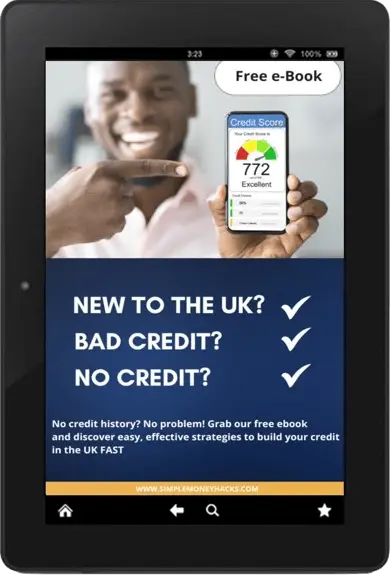How to Stop Impulse Spending Without Feeling Deprived—Have you ever popped into Tesco for ‘just a pint of milk’ and left with a trolley full of things you never planned to buy? We’ve all been there. Impulse spending sneaks up on us, leaving wallets lighter and fridges stuffed with food we barely touch.
But there’s good news: we can kick this habit together. As the new year begins, it’s time to build some smart financial habits. This isn’t about giving up life’s little joys; it’s about finding a balance.
In this guide, we’ll explore simple, practical ways to curb impulse spending while still enjoying the things that matter. Forget extreme penny-pinching – we’re talking about making smarter choices that leave room for life’s pleasures and your financial goals.
Why Do We Impulse Spend?
Many of us are emotional shoppers—whether it’s due to boredom, stress, tiredness, or even excitement. The thrill of a “buy one, get one free” deal can feel like the lure of “juju.” It’s addictive, but the high is short-lived. Have you ever asked yourself, “What was I thinking?” because, in the cold light of day, you realise you don’t need it—you may not even really like it. It was the ‘get one free’ that lured you in.
Retailers know how to pull at our psychological strings. Flash sales, “limited-time offers,” and those sneaky “only 2 left in stock” notifications tap into FOMO (fear of missing out). These tactics make us feel like we’re saving money when, in reality, we’re spending more than we planned. The key to stopping impulse spending is understanding why it happens and making intentional changes.
Step 1: Identify Your Triggers
Impulse buying isn’t random—it’s driven by patterns. Maybe you shop when you’re bored or feeling insecure. I’ve learned never to go food shopping when I’m hungry or tired; if I do, I buy far more than I need. I’ve also noticed that I shop more when excited about a new fitness regime. I buy so-called super-foods I dislike, which rot in the fridge. Recognising these triggers is the first step to breaking the cycle.
Action Tip:
Keep a “spending diary” for a week. Write down every unplanned purchase and note how you felt at the time. Look for patterns. Were you stressed? Bored? Identifying these triggers will help you develop strategies to avoid them.
Step 2: Practice the 24-Hour Rule
Impulse purchases thrive on urgency. The trick? Slow down and give yourself time to think.
For in-store purchases:
If something catches your eye, wait 24 hours before buying. The urge will pass, and you’ll realise you didn’t need it.
For online shopping:
Add items to your basket, but don’t check out immediately. Let them sit there for a day or two. You might forget about most of them.
Step 3: Create a Monthly “Fun Fund”
Life is for living—you don’t have to give up all your treats. A monthly “fun fund” allows you to indulge in non-essentials without guilt. Whether it’s £50 for coffee dates, books, or a cheeky takeaway, setting limits ensures your spending stays in control.
Action Tip:
Open a separate bank account or use an app like Monzo to create a designated “fun fund.” Once the money’s gone, it’s gone—but you’ll feel good knowing you treated yourself without overindulging.
Step 4: Unsubscribe and Declutter
Emails shouting “50% off today only!” are designed to make you spend. The best approach here is to keep them out of sight and out of mind.
Action Tips:
- Unsubscribe from retailer emails and mute social media accounts that push tempting sales.
- Declutter your home to remind yourself of what you already own. Is that drawer full of barely-used Afro-haircare products? Let it inspire you to think twice before buying more.
Step 5: Budget for Big Purchases
Impulse spending often eats into savings for bigger, meaningful goals. If you’ve ever wondered why you can’t afford that holiday or designer bag, it might be because small, unplanned purchases are draining your funds. Action Tip:
List the big-ticket items you want and start saving for them monthly. Knowing you’re working towards something exciting makes it easier to skip unnecessary splurges.

Step 6: Always Shop with a List
A shopping list is your best defence against unplanned spending. Wandering into shops or browsing online without a plan makes you vulnerable to marketing tricks.
Action Tip:
Before shopping, write a list and commit to sticking to it. Use a wish list to track things you’d like to buy online. Review it monthly to see if you still want them.
Step 7: Turn FOMO into JOMO
FOMO (fear of missing out) is one of the biggest drivers of impulse spending. But embracing JOMO (joy of missing out) can help you focus on what truly matters.
Action Tip:
Start a gratitude list. Write down items you already own and love, like your cosiest jumper or favourite coffee mug. Appreciating what you have reduces the urge to chase every sale or trend.
Step 8: Keep Your Goals Front and Centre
When tempted to spend impulsively, think about your long-term financial goals. Whether saving for a house, building an emergency fund, or paying off debt, keeping those goals in mind can be a powerful motivator.
Action Tip:
Write your goals on a sticky note or set them as your phone background. This will be a constant reminder of what you’re working towards.
Step 9: Find Free or Low-Cost Alternatives
Impulse spending often occurs when we’re looking for entertainment or comfort. Instead of splurging, explore free or low-cost ways to treat yourself.
Ideas:
- Host a movie night at home with homemade popcorn.
- Try a new recipe with ingredients you already have.
- Finding a hobby that captivates you can work wonders for breaking the cycle of emotional spending.
Step 10: Track Your Progress
Breaking the habit of impulse spending won’t happen overnight, but tracking your wins keeps you motivated. Celebrate the moments you resist temptation—it’s a big deal!
Action Tip:
Monitor your spending using a budgeting app like Emma, YNAB, or Monzo. Seeing your savings grow is incredibly satisfying.
Final Thoughts: Take Control Without Feeling Deprived
Impulse spending doesn’t mean you’re bad with money—it’s just a habit, and habits can change. By understanding your triggers, setting boundaries, and focusing on what really matters, you can take control of your finances without feeling like you’re missing out. The key is balance—treat yourself occasionally, but do it with intention and a plan.
Want more practical money tips delivered straight to your inbox? Join my newsletter 👇👇👇 for exclusive insights on managing your finances easily—no extreme frugality, just real-life advice that works. And for daily budgeting hacks, smart spending tips, and a peek into my money journey, follow me on Instagram.
Impulse spending is just one piece of the puzzle. If you’re ready to take your savings game to the next level, don’t miss my blog on How to Save Money Effortlessly—because saving should feel easy, not like a struggle!
Let’s make smarter money moves together! 🚀





